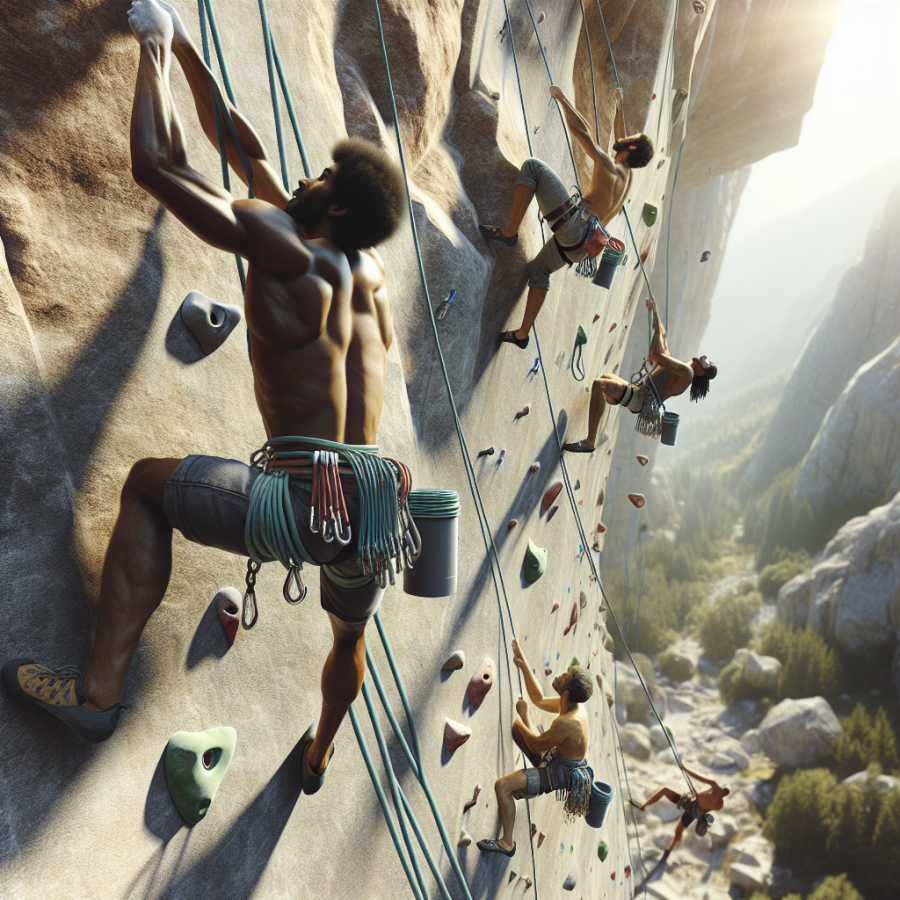Scaling New Peaks: Unveiling the Excitement of Sport Climbing
Sport climbing, a dynamic and adrenaline-fueled sport, has captured the imaginations of athletes and spectators alike. This high-intensity activity combines physical strength, mental endurance, and strategic planning, ensuring that participants are always on their toes. As the popularity of this sport skyrockets, climbers of all levels are drawn to the challenge and camaraderie it offers.
One of the primary attractions of sport climbing is the variety of styles and disciplines it encompasses. Lead climbing puts athletes on a route, often overhanging, where they must clip their safety ropes into pre-set quickdraws on the way to the top. Bouldering strips climbing down to its raw elements: powerful, intricate moves on short "problems" without the use of ropes. Speed climbing pits two climbers head-to-head to scale a fixed route in the quickest time possible, adding an intense competitive element to the sport.
The mental aspect of sport climbing is as demanding as the physical. Route reading is a crucial skill, allowing climbers to visualize their ascents before making the first move. Decision-making under pressure and problem-solving in real-time are also integral to a successful climb, with athletes needing to remain composed as they decipher the best path upwards.
Training for sport climbing is multidimensional. It goes beyond just building muscle and endurance; climbers must hone their technique, flexibility, and movement efficiency. Many engage in complementary training such as yoga or Pilates to enhance their core strength and balance, which are vital for maintaining control during complex sequences.
Moreover, the inclusivity and community within sport climbing are part of its escalating appeal. Indoor climbing gyms have become hubs where beginners and experts alike share tips, motivations, and stories of their vertical adventures. The sport has a unique way of challenging individual limits while fostering a supportive environment, making it appealing across age groups and skill levels.
As sport climbing makes its ascent into mainstream recognition, including its inclusion in international competitions and the Olympic Games, it's breaking new ground for climbing as a spectator sport. The impressive athleticism and gravity-defying feats of climbers captivate audiences, further propelling the sport's popularity.
Lastly, the proliferation of climbing films and documentaries has played a significant role in promoting the sport. These narratives not only showcase the breathtaking landscapes and the physical prowess required for sport climbing but also spotlight the captivating human stories behind the climbers. From overcoming fears to breaking through personal barriers, the stories resound with viewers, inspiring a new generation to reach for the heights.
Read also:
Understanding the Legality of Golf Carts on Texas Streets
From Beginner Grips to Expert Holds: The Progressive Challenge in Sport Climbing
Stepping into the world of sport climbing can be exhilarating, as it challenges both the mind and the body, offering a unique mix of physical exertion and mental puzzle-solving. For novices, beginning with the basics is key, and that includes learning the fundamental grips that are the building blocks of this thrilling sport.
As a beginner, understanding and mastering the basic types of holds is crucial. These usually include jugs, which are large holds that can be easily gripped with the entire hand. They are the most secure and are often used for resting and gaining confidence on the wall. Next are edges, flat holds that can be used both for hands and feet, depending on their size and orientation. Pinches require climbers to literally pinch the hold between their thumb and fingers, presenting the first real test of forearm strength. Slopers are rounded holds with little to no edge, requiring an open-handed grip and a great deal of contact strength. Crimps are small edges that climbers grip with just the tips of their fingers and are perhaps the ultimate test of finger strength for those new to the sport.
As climbers gain experience, they gradually encounter more advanced grip types and challenging wall features. This is where climbing not only becomes a test of strength but also of technique and strategic thinking. Pockets, for instance, are small holes in the wall that may only allow for one or two fingers to fit inside, forcing climbers to be precise and intentional with their movement. Underclings are holds that face downward, requiring a climber to reach underneath and pull upwards, engaging different muscle groups and adding variety to their climbing repertoire.
Transitioning from the comfortable world of beginner grips to more advanced holds often means confronting a fear of falling and trusting in one’s ability. This psychological aspect is just as important as physical strength. As climbers progress, they start to work on more dynamic moves such as deadpoints, where they must time their release and catch of holds precisely, as well as learning how to utilize body tension and momentum to navigate between holds that are far apart.
Overhangs and roofs present another layer of complexity, completely changing the way gravity affects a climber. Here, endurance becomes paramount, as climbers must maintain their hold on the wall while navigating these challenging angles. Training for these sections often includes campus board workouts and hangboard routines that build the necessary grip strength and endurance.




